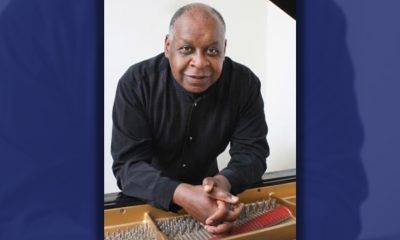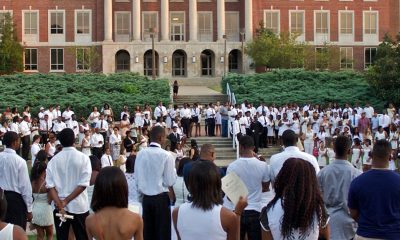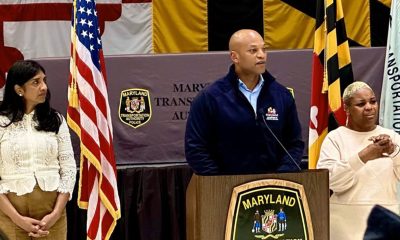Commentary
COMMENTARY: Robert F. Smith’s Morehouse and the call for self-sufficiency
SOUTH FLORIDA TIMES — Dozens of white parents were recently accused of paying millions of dollars in bribes to get their children into Ivy League universities. Such luxury is not available to African Americans, even if they were so inclined. Elijah Dormeus’ father died when he was 7 and he and his eight siblings were raised by a single mother in Harlem, N.Y., USA TODAY reported. His student loan debt to attend Morehouse College totaled $100,000. Brandon Manor also owed $100,000 and John Cooper, $98,000. But their loans will be paid off because another rich person saw a different way to use his wealth.
By Mohamed Hamaludin
Dozens of white parents were recently accused of paying millions of dollars in bribes to get their children into Ivy League universities. Such luxury is not available to African Americans, even if they were so inclined. Elijah Dormeus’ father died when he was 7 and he and his eight siblings were raised by a single mother in Harlem, N.Y., USA TODAY reported. His student loan debt to attend Morehouse College totaled $100,000. Brandon Manor also owed $100,000 and John Cooper, $98,000. But their loans will be paid off because another rich person saw a different way to use his wealth.
Robert F. Smith, 56, whose fortune, at $5 billion, makes him the richest African American — and one of only two African American billionaires – the other being retired basketball player Michael Jordan – was delivering Morehouse’s commence address on May 19 when he suddenly announced that he will pay off the debt of the entire class, which could be up to $40 million.
The Detroit Free Press reported that, in 2017, the average student debt at Morehouse, the Atlanta-based men’s college, where tuition, room and board cost about $48,000, is $31,833 and eight in 10 students have loans. The New York Times reported that, overall, African American graduates owe about $7,400 more than whites. Citing a report from the Brookings Institution, the paper said that, four years after graduation, African Americans still owe an average of $53,000 or twice as much as whites.
Forbes magazine put the number of billionaires in the U.S. at 585 with a total net worth of $2.4 trillion. Andres Viglucci reported in The Miami Herald that “30 fulltime resident billionaires — one of the highest concentrations in the world” live in Miami-Dade and “occupy the top of the pyramid atop deep and widespread poverty, a small and shrinking middle class and a large workforce dependent on poorly paid service jobs.” Viglucci was citing a report, “Toward a More Inclusive Region,” co-authored by urbanist Richard Florida and New York University professor Steven Pedigo for the Miami Urban Future Initiative think tank at Florida International University. The researchers found that the rich-poor gap is worse only in New York City and on par with Panama and Colombia.
Those wealthy people do nothing to help the communities that offer them an oppor tunity to shelter their assets due to Florida’s generous property safeguard laws.
But then Smith seems to have been made from a different mold. He grew up in a predominantly African American community in Colorado, his parents high school principals with doctorates. Wikipedia says that as an infant his mother took him to the March on Washington, where Martin Luther King Jr. delivered his “I Have a Dream” speech. The New York Times reported that when he was a child she was sending monthly checks of $25 to the United Negro College Fund.
Smith studied chemical engineering at Cornell University and business administration at Columbia University. After a variety of jobs in finance and technology, he founded Vista Equity Partners in 2000, specializing in buying and selling software companies and managing assets totaling $46 billion. His growing wealth did not pull him from his community but, rather, sharpened his interest in the economic condition and educational opportunities of African Americans.
But his Morehouse gesture is not without critics. “The penny-pinching parents wonder where’s their reward for driving their cars until the vehicles have to be towed off the road,” Michelle Singletary commented in The Washington Post. “What do they get for forgoing expensive vacations so that they could put money in a … college savings plan, thereby eliminating or greatly reducing the need for them or their children to take out student loans?”
Anand Giridharadas, author of “Winners Take All,” told The New York Times that donations such as Smith’s “can make people believe that billionaires are taking care of our problems and distract us from ways in which others in finance are working to cause problems like student debts or the subprime crisis on a epically greater scale than this gift.”
Both may have a point and perhaps Smith should instead have followed the lead of Oprah Winfrey and help those who cannot afford loans or are in danger of dropping out of college. Winfrey donated $1 million to Morehouse 30 years ago to establish a scholarship fund in her name; it has since grown to $12 million.
Still, because of Smith, Elijah Dormeus can now focus on helping his younger brother, Jeremiah, pay for college. Brandon Manor can widen his medical school search and John Cooper can pursue his plan to attend law school.
And Smith had a challenge for the students: “Let’s make sure every class has the same opportunity going forward, because we are enough to take care of our own community. We are enough to ensure we have all of the opportunities of the American dream and we will show it to each other through our actions and through our words and through our deeds.”
Dormeus, for one, plans to do just that. He is hoping to create a foundation to help people pay off their debts and get into college, USA TODAY reported.
This article originally appeared in the South Florida Times
Activism
Oakland Post: Week of April 24 – 30, 2024
The printed Weekly Edition of the Oakland Post: Week of April 24 – 30, 2024

To enlarge your view of this issue, use the slider, magnifying glass icon or full page icon in the lower right corner of the browser window. ![]()
Activism
Oakland Post: Week of April 17 – 23, 2024
The printed Weekly Edition of the Oakland Post: Week of April 17 – 23, 2024

To enlarge your view of this issue, use the slider, magnifying glass icon or full page icon in the lower right corner of the browser window. ![]()
Commentary
Opinion: Surviving the Earthquake, an Eclipse and “Emil Amok.”
Last Friday, a 4.8 magnitude earthquake shook New York City, reported as the “biggest earthquake with an epicenter in the NYC area since 1884” when a 5.2 quake hit. A bit bigger. The last quake similar to Friday’s was a 4.9 in 1783.Alexander Hamilton felt it — 241 years ago. That’s why New Yorkers were freaking out on Friday. They were in the room where it happens.
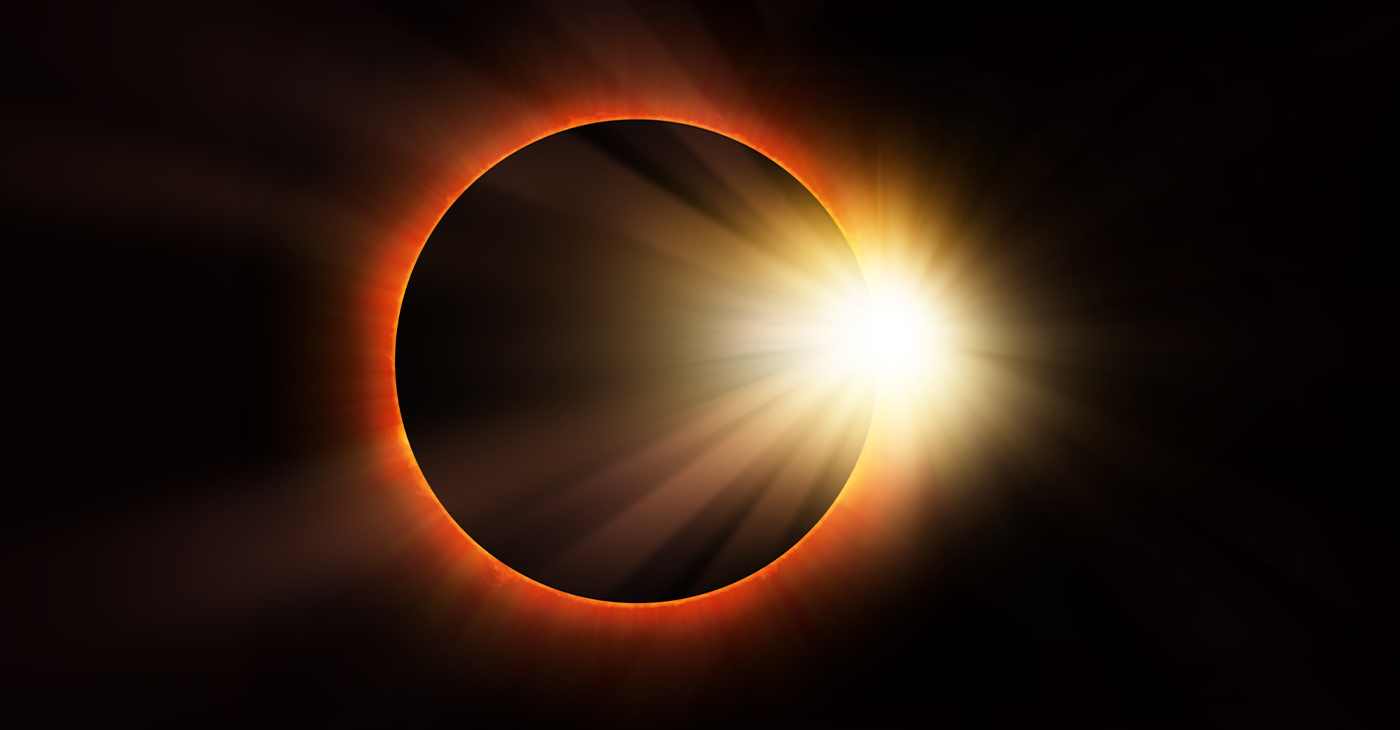
By Emil Guillermo
I’m a Northern Californian in New York City for the next few weeks, doing my one-man show, “Emil Amok, Lost NPR Host, Wiley Filipino, Vegan Transdad.”
I must like performing in the wake of Mother Nature.
Last Friday, a 4.8 magnitude earthquake shook New York City, reported as the “biggest earthquake with an epicenter in the NYC area since 1884” when a 5.2 quake hit. A bit bigger. The last quake similar to Friday’s was a 4.9 in 1783.
Alexander Hamilton felt it — 241 years ago.
That’s why New Yorkers were freaking out on Friday. They were in the room where it happens.
And it just doesn’t happen that often.
Beyonce singing country music happens more frequently.
When I felt New York shake last week, it reminded me of a time in a San Francisco TV newsroom when editors fretted about a lack of news an hour before showtime.
Then the office carpeting moved for a good ten seconds, and the news gods gave us our lead story.
On Friday when it happened in NYC, I noticed the lines in the carpeting in my room wiggling. But I thought it was from a raucous hotel worker vacuuming nearby.
I didn’t even think earthquake. In New York?
I just went about my business as if nothing had happened. After living near fault lines all my life, I was taking things for granted.
Considering the age of structures in New York, I should have been even more concerned about falling objects inside (shelves, stuff on walls) and outside buildings (signs, scaffolding), fire hazards from possible gas leaks, and then I should have looked for others on my floor and in the hotel lobby to confirm or aid or tell stories.
Of course, as a Californian who has lived through and covered quakes in the 4 to 6 magnitude range, I tried to calm down any traumatized New Yorker I encountered by taking full responsibility for bringing in the quake from the Bay Area.
I reassured them things would be all right, and then let them know that 4.8s are nothing.
And then I invited them to my consoling post-Earthquake performance of “Emil Amok, Lost NPR Host…”
It was the night of the eclipse.
ECLIPSING THE ECLIPSE
In New York City, the eclipse was about 90 percent visible. Good enough for me. Though a full solar eclipse is a celestial rarity, blockages of any sort aren’t generally celebrated. My one-man play is about growing up with the eclipsed history of American Filipinos and how I struggle to unblock all that.
For example, did you know the first Filipinos actually arrived to what is now California in 1587? That’s 33 years before the Pilgrims arrived in America on the other coast, but few know the Filipino history which has been totally eclipsed.
I was in Battery Park sitting on a bench and there was a sense of community as people all came to look up. A young woman sitting next to me had a filter for a cell phone camera. We began talking and she let me use it. That filter enabled me to take a picture of the main event with my iPhone.
For helping me see, I invited her and her boyfriend to come see my show.
Coincidentally, she was from Plymouth, Massachusetts, near the rock that says the year the Pilgrims landed in 1620.
In my show she learned the truth. The Pilgrims were second.
History unblocked. But it took a solar eclipse.
Next one in 2044? We have a lot more unblocking to do.
If you’re in New York come see my show, Sat. April 13th, 5:20 pm Eastern; Fri. April 19, 8:10 pm Eastern; and Sun. April 21st 5:20 pm Eastern.
You can also livestream the show. Get tickets at www.amok.com/tickets
About the Author
Emil Guillermo is a journalist and commentator. He does a mini-talk show on YouTube.com/@emilamok1. He wishes all his readers a Happy Easter!
-

 Community2 weeks ago
Community2 weeks agoFinancial Assistance Bill for Descendants of Enslaved Persons to Help Them Purchase, Own, or Maintain a Home
-

 Activism3 weeks ago
Activism3 weeks agoOakland Post: Week of April 3 – 6, 2024
-

 Business2 weeks ago
Business2 weeks agoV.P. Kamala Harris: Americans With Criminal Records Will Soon Be Eligible for SBA Loans
-

 Community2 weeks ago
Community2 weeks agoAG Bonta Says Oakland School Leaders Should Comply with State Laws to Avoid ‘Disparate Harm’ When Closing or Merging Schools
-

 Activism2 weeks ago
Activism2 weeks agoOakland Post: Week of April 10 – 16, 2024
-

 Community1 week ago
Community1 week agoOakland WNBA Player to be Inducted Into Hall of Fame
-

 Community1 week ago
Community1 week agoRichmond Nonprofit Helps Ex-Felons Get Back on Their Feet
-
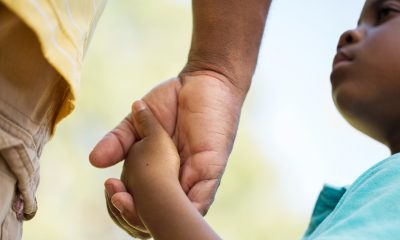
 City Government2 weeks ago
City Government2 weeks agoLAO Releases Report on Racial and Ethnic Disparities in California Child Welfare System



